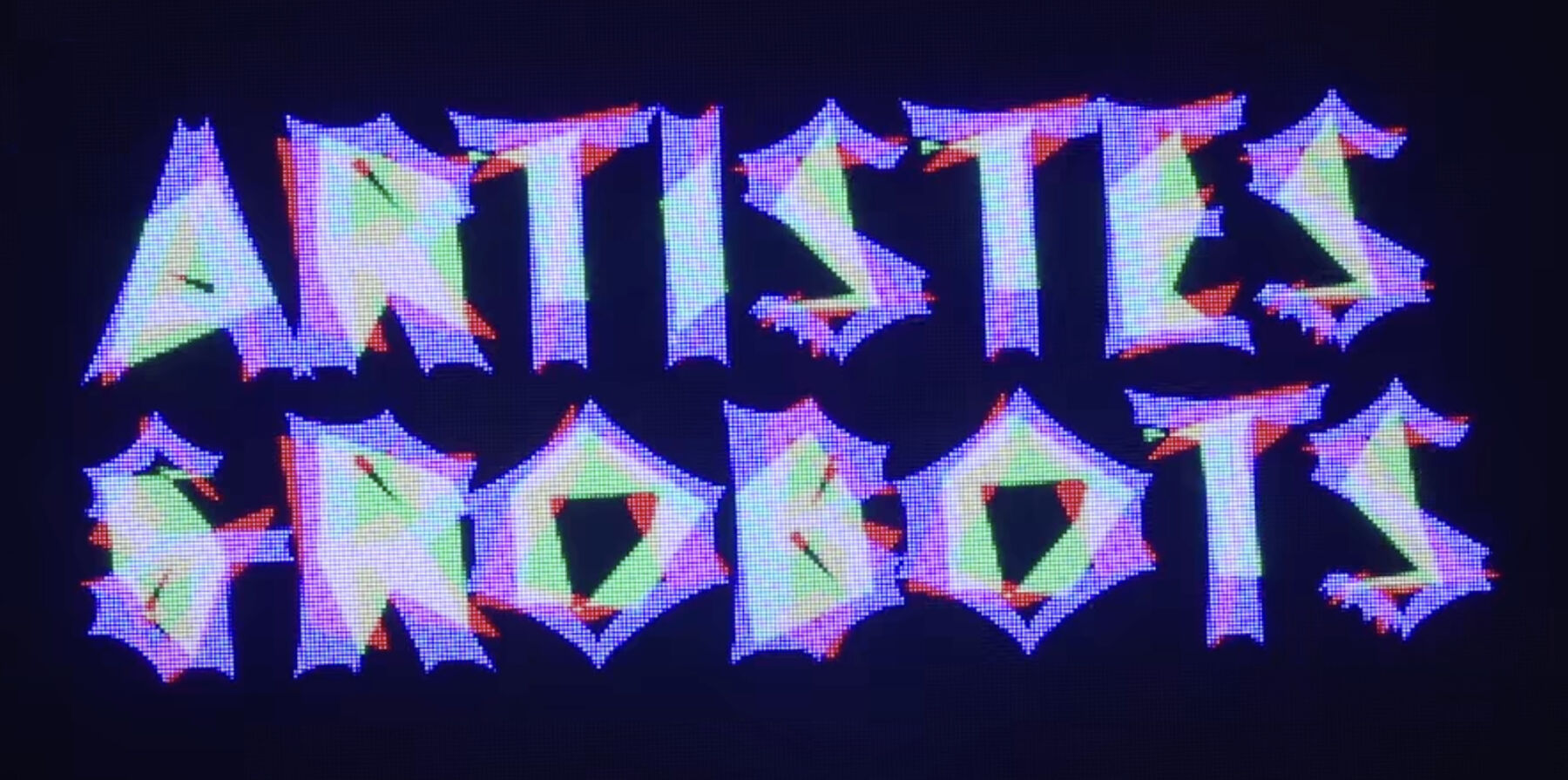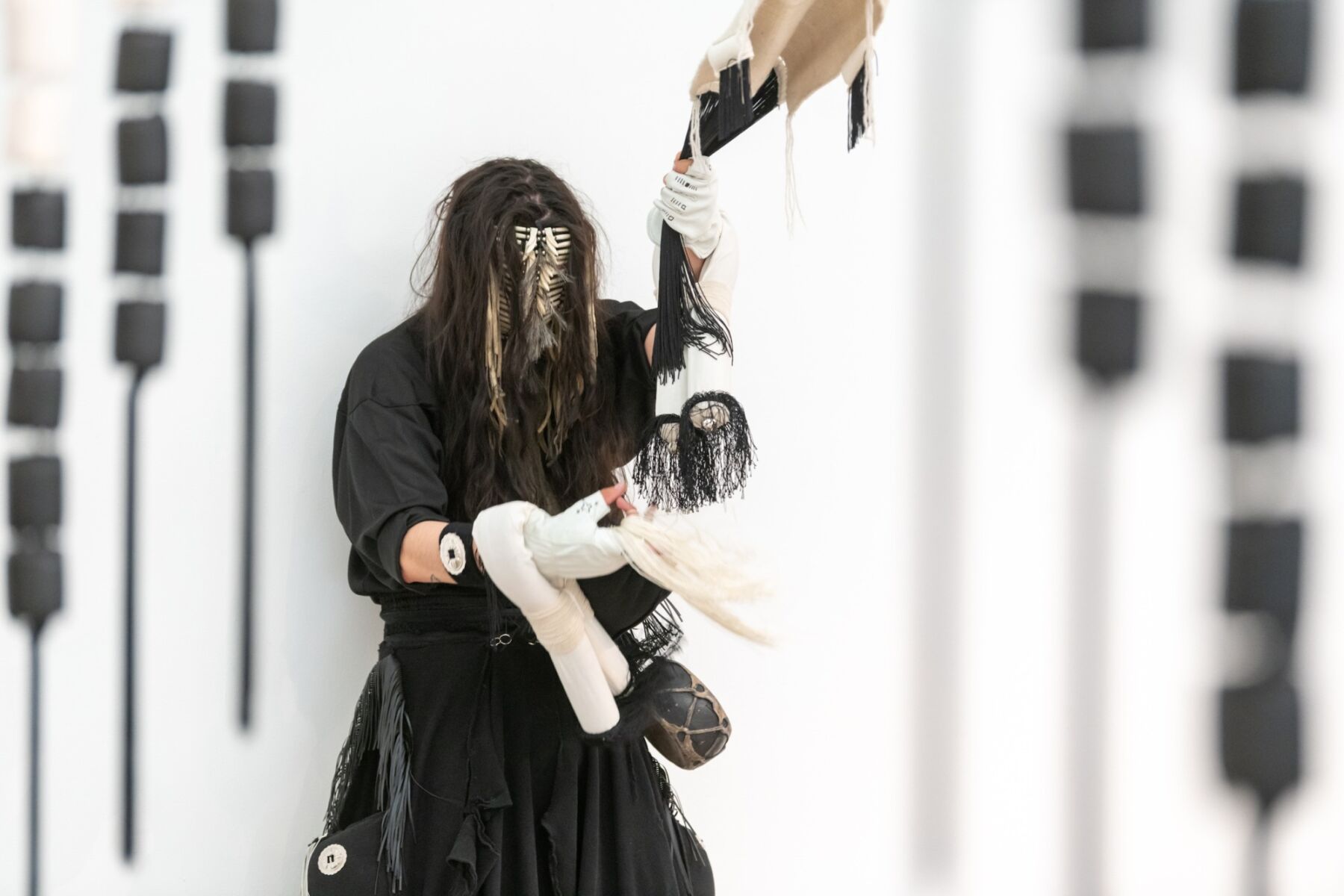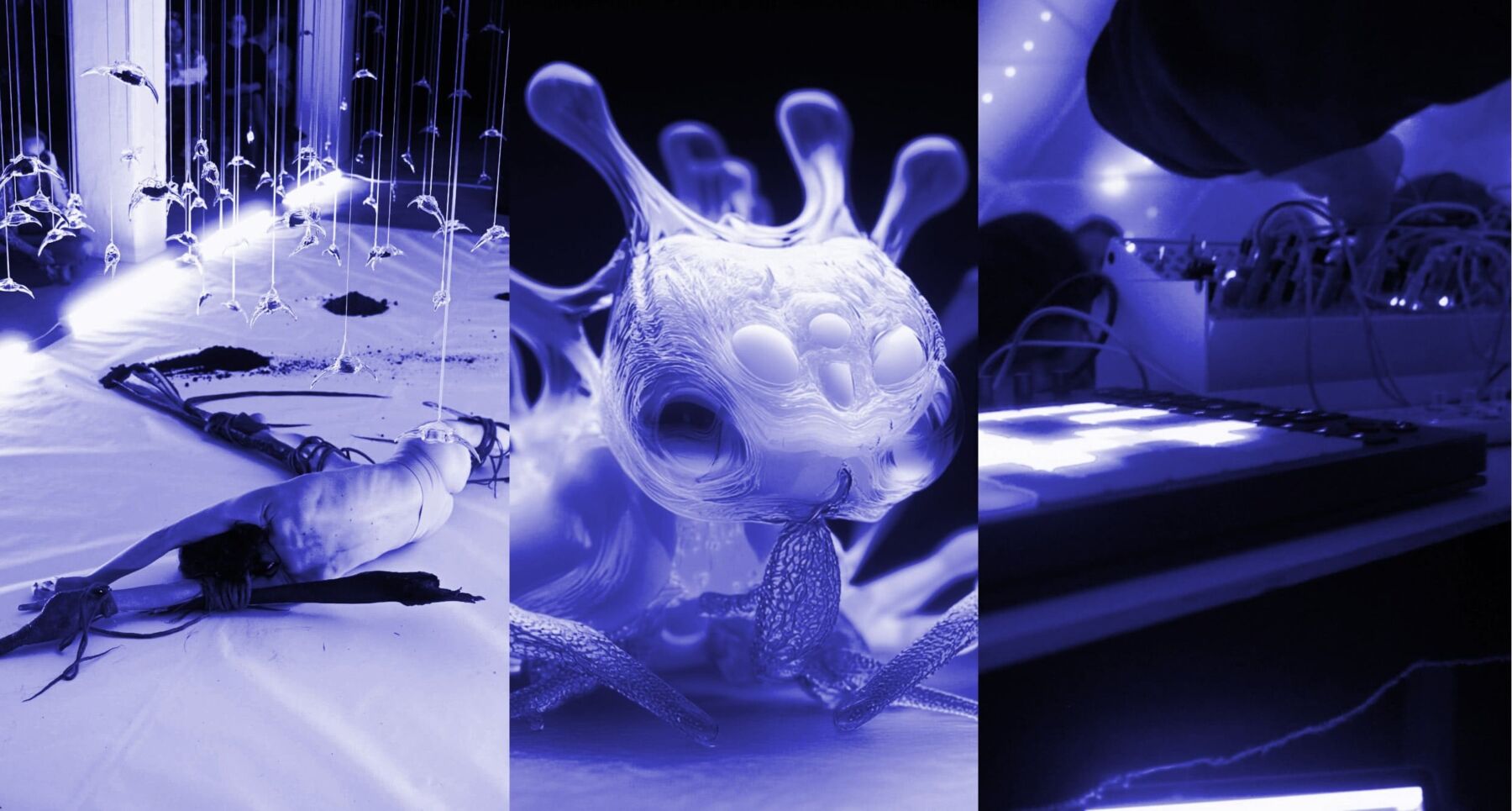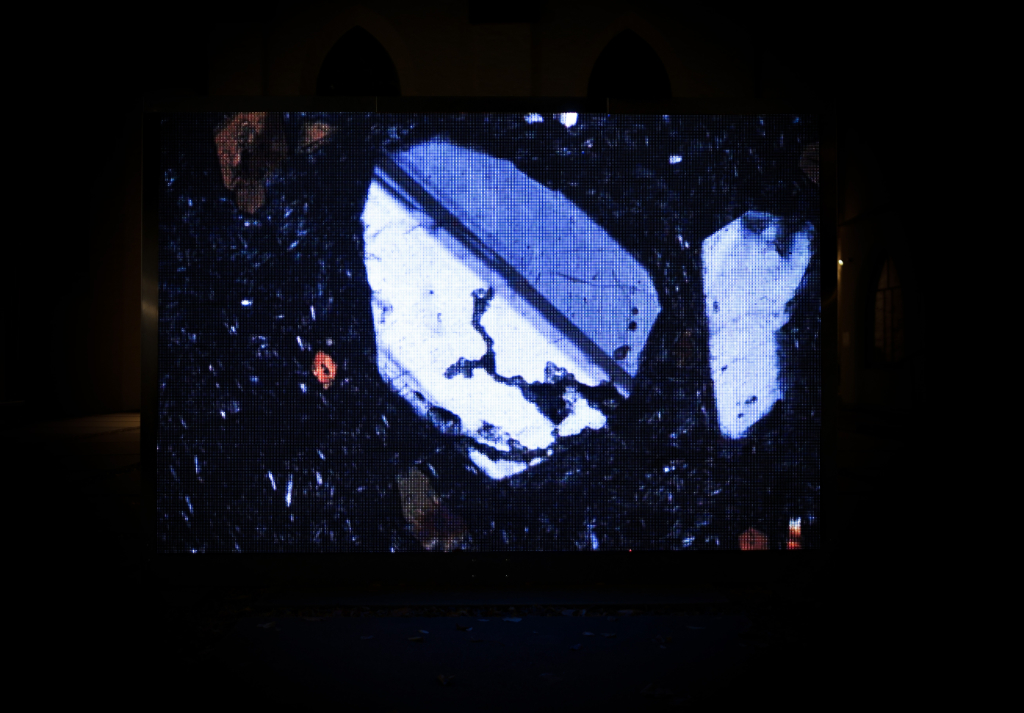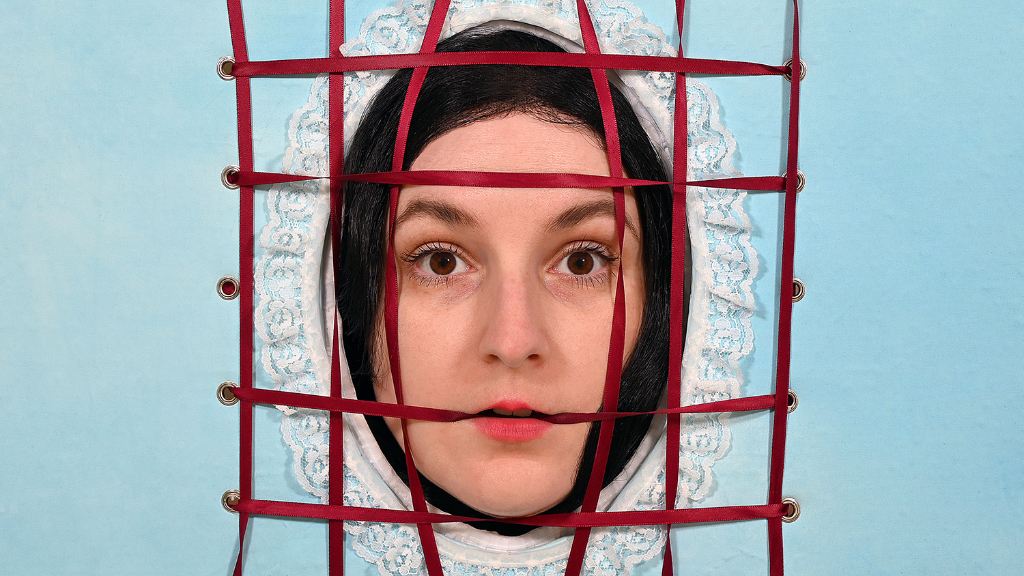Text by CLOT Magazine
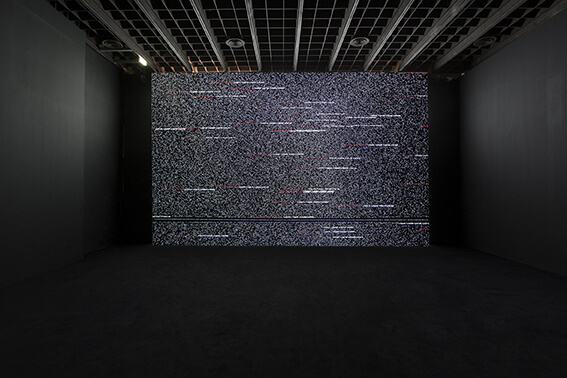
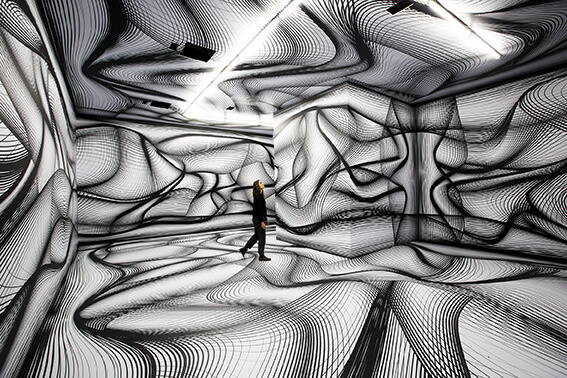
A delicate nickel apparatus like an astrolabe being fixed to their necks and fitted with animal membranes to record by interpenetration the apparition of each fresh poetic streak, their bodies being bound to their chairs… so that they could only move a hand in a certain way and the sinuous line was allowed to inscribe the appropriate white cylinders. Meanwhile, their friends,[…] would lean over the recording apparatus and, with dilated pupils, await the expected but unknown movement, sentence, or image.
Salvador Dali, 1932
Artists et Robots, one of the current exhibitions at the Grand Palais in Paris, presents the first-ever museum exhibition dedicated to the «artificial imagination», a generic term used to group robotic, generative and algorithmic art together. The exhibition is an opportunity to experience works of art produced with the help of increasingly sophisticated robots, featuring pieces by around 40 worldwide renowned artists.
The artists presented in Artistes et Robots explore new technologies, including Artificial Intelligence, which is potentially revolutionising human lives and even the conditions in which artworks are produced, presented, disseminated, conserved and received.
For Jérôme Neutres, curator of the exhibition, media worldwide speak continuously about AI and its applications in the domestic and industrial fields. We wanted to raise the question of «artificial imagination». Or how artists use the techniques of AI to create new forms of art and new images. It appears that the IA concept was invented in the Us by John McCarthy in 1954-1956. During that same period, artists like Nicolas Schoffer start to create intelligent artistic robots capable of generating art autonomously.
The first work presented in the show is the CYSP1 by Schoffer, the first ever dancing robot, dated 1956. Then we explore the theme until the androids by Murakami (2016) and ORLAN (2018), passing through the computer art pioneers Vera Molnar and Manfred Morh, the generative artists Chevalier and Ikam, etc. It is a story about artists in search of new art forms.
In the first part of the exhibition, robots are the ones creating the artwork; they are visible and operate using bodies or arms that draw, paint or engrave. The relative facility of their movements is sometimes so ‘physical’ that becomes humanized. Here we find works by Nicolas Schoffer and Nam June Paik. In the second part of the exhibition, the robots are in the realm of IT and no longer visible: they give works their shape, their movement, their generative quality and their ability to interact with the public (in this section works by Iannis Xenakis and Ryoji Ikeda).
In the third sequence, it is portrayed how Artificial Intelligence helps us trespass the limitations of the body with ever-increasing expertise. This is the most troubling sequence as it potentially affects our physical survival. Artists challenging this concept are represented by Stelarc, Christa Sommerer & Jerome Mignonneau, Memo Atken and ORLAN. The provocative French performance artist is presenting a new piece conceived specially for this exhibition, a video-robot installation ORLAN et ORLANOIDE, strip-tease électronique et verbal.
Jerome Neutres further explains the complexity of such a diverse exhibition: The challenge was to establish a coherent and attractive script, to count this story of 62 years of creative collaboration between artists and robots. Another issue was technical: we wanted to show it as a sort of giant artists’ studio where the robots are created in real-time.
It means a special setting and a very different format of exhibition compared to traditional paintings shows of the Grand Palais… but at the same time, they have managed to provide a great experience: since the opening of the show, I can see how happy is the audience to interact with immersive works from artists like Raquel Kogan or Miguel Chevalier. In a sense, it is a concretization of Marcel Duchamp’s motto: This is the viewer who is making the painting…
The curator aims that the exhibition and the artworks presented force us to reconsider how we measure what it means to be human. They are the object of a joint work involving the artist, the engineer, the robot and we, who modify interactive works in passing.
On the future of AI-generated art, Neutres omens a positive one: Artists dealing with AI and robotic technics open new windows for art. This is very inspiring for young artists, and I can bet that many new artists will invent again new visual worlds thanks to this strategic alliance of the artist and the robots. Also, I can see that collectors and museums have started to acquire more of this kind of art. This is also a good signal.

